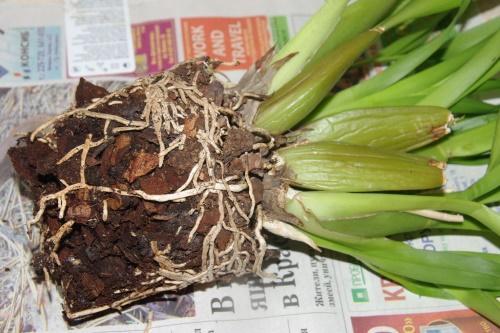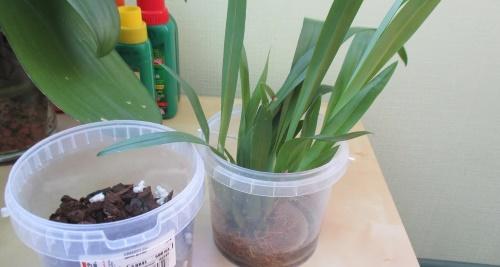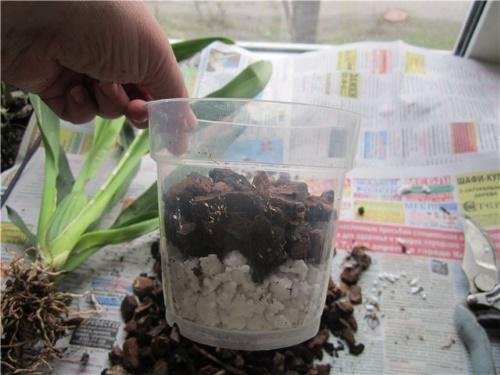How to transplant cambria and not miss the right moment
 Regardless of color, all orchids are beautiful, but the variegated cambria has a special charm. Its buds stand out not only for their color, but also for their larger size than that of Phalaenopsis, and a pleasant aroma. In order for a plant to bloom abundantly, for a long time and annually, you need to properly care for it and also know how to transplant cambria. Experienced growers know that the larger the bush, the more inflorescences it will give. However, such specimens require more space and nutritious soil that can "saturate" them. A transplant for adult plants is simply vital. As a result of this procedure, the cambria receives a fresh nutrient substrate, space for the root system, which means it will feel better.
Regardless of color, all orchids are beautiful, but the variegated cambria has a special charm. Its buds stand out not only for their color, but also for their larger size than that of Phalaenopsis, and a pleasant aroma. In order for a plant to bloom abundantly, for a long time and annually, you need to properly care for it and also know how to transplant cambria. Experienced growers know that the larger the bush, the more inflorescences it will give. However, such specimens require more space and nutritious soil that can "saturate" them. A transplant for adult plants is simply vital. As a result of this procedure, the cambria receives a fresh nutrient substrate, space for the root system, which means it will feel better.
Timing, reasons and frequency of transplants

- roots protrude from the drainage holes or directly from the top of the flowerpot;
- the bush has increased significantly in size;
- the substrate began to rot;
- there were problems with the orchid itself.
In the last two cases, it is impossible to wait until 2 years have passed. If a fungus has appeared on Cambria or in the soil, it is necessary to urgently change the soil. The pot should also be replaced or disinfected.
For Cambria, a special substrate for epiphytes, containing bark of fine and medium fraction. In addition to her, such a soil mixture contains moss, charcoal, fern roots and coconut flakes. This is exactly what the orchid needs. The pot itself should be slightly larger than the previous one, but without fanaticism. If the vessel is too spacious, the bark will not have time to dry out and the cambria can rot.
During the flowering period, a transplant cannot be carried out, with the exception of a plant disease.
How to transplant cambria - step by step instructions
 The first step is to carefully remove the orchid from the old pot so as not to damage the roots. You can pick up the top layer of soil with a stick. Then, if possible, free the root system from the old bark.
The first step is to carefully remove the orchid from the old pot so as not to damage the roots. You can pick up the top layer of soil with a stick. Then, if possible, free the root system from the old bark.
In case of a disease, before planting, the roots must be treated with a fungicide and allowed to dry well.
Now you can proceed directly to the transplant:
- Place some foam, broken into pieces, on the bottom of the new flowerpot. It will protect the lower roots of the orchid from contact with moisture.
- Place a layer of small fresh bark on top of the foam.
- Place the bush in the center of the pot, tucking the roots into the container. Bulbs should remain at ground level. It is not advisable to deepen them too much, since they can rot.
- Pour soil into the holes between the roots, pushing the bark with your fingers. Knock on the flowerpot so that the soil settles down and fills in the voids, and add more.
After transplanting cambria, it is better not to water for five days. At the first watering, you can add fertilizers and a rooting agent to the water, and wipe the leaves with succinic acid. This will help the orchid to adapt more quickly after experiencing stress.